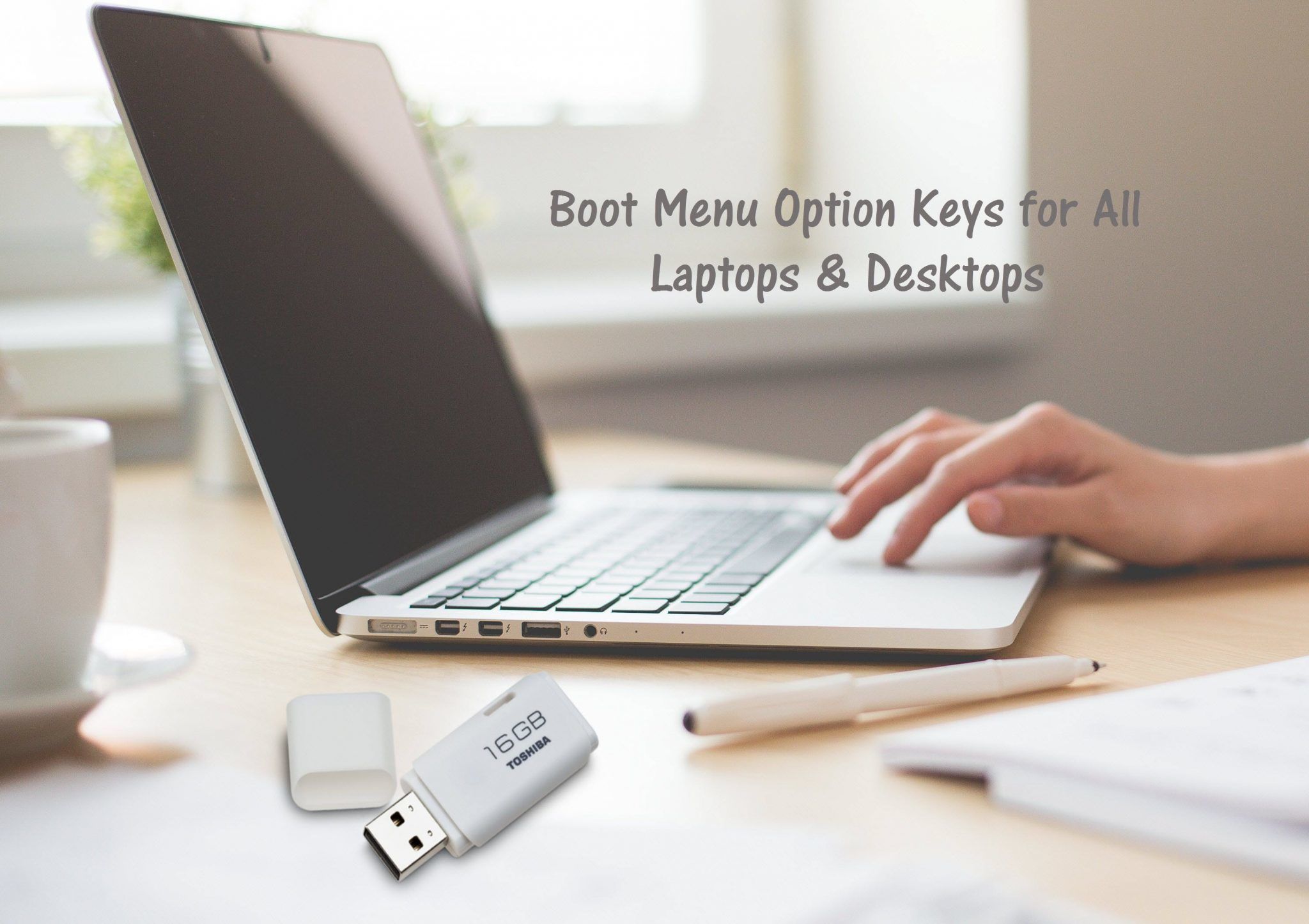In this article, I’m going to show you some of the most popular or famous laptops and desktops boot menu option keys that are very important. As all the computer users know that all the laptops and desktops are having various boot menu option keys and are different with one another. Every company that design computer, they set their own key for boot menu or system BIOS and that’s how hundreds of our visitors ask us about boot menu options for their devices. So, I now you can find your boot menu option keys with system bios for all laptops and desktops. If in this post you didn’t find your system bios or boot menu option keys lets know.

Boot Menu Option Keys & System Bios Keys For all Laptops and Desktops
Find Boot Menu Option Keys & System BIOS Keys Down
| Manufacturer | Type | Boot Menu Option Keys | System BIOS Keys |
| Lenovo | Desktop | F12, F8, F10 | F1, F2 |
| Lenovo | Laptop | F12, Nano Button, Fn + F11 | F1, F2 or Nano Button |
| Lenovo | Notebook | F12 | F2 |
| Intel | F10 | ||
| HP | Desktop | Esc, F9 | F10, Esc |
| HP | Generic | Esc, F9 | Esc, F10, F1 |
| HP | Laptop | Esc | F10 |
| HP | Notebook | Esc | Esc or F10 |
| HP | Tower | Esc | F1 |
| Dell | Desktop | F12 | F2 |
| Dell | Laptop | F12 | F2 |
| Asus | Desktop | F8 | F9 |
| Asus | Laptop | Esc | F2 or Delete |
| Asus | Notebook | Esc, F8 | F2, Delete |
| Acer | Esc, F12, F9 | Del, F2 | |
| Acer | Notebook | F12 | F2 |
| Samsung | Esc, F12 | ||
| Samsung | Notebook | Esc | F2 |
| Samsung | Ultrabook | Esc | F2 |
| Samsung | Ultrabook Ative Book | F2 | F10 |
| Sony | Laptop | Assist Button, Esc, F11 | Assist Button, F1, F2, F3 |
| Toshiba | Laptop | F12 | F2 |
| Toshiba | Protege, Satellite, Tecra | F12 | F1, Esc |
| Toshiba | Equium | F12 | F12 |
| Compaq | Presario | Esc, F9 | F10 |
| Fujitsu | Laptop | F12 | F2 |
| NEC | F5 | F2 | |
| Packard Bell | F8 | F1, Del | |
| eMachines | F12 | Tab, Del | |
| Sharp | – | F2 |
Apple Laptops Boot Keys
Command + Option + P + R (PRAM and NVRAM Reset)
Command + S (Boot into Single-User Mode)
Command + V (Boot with Verbose Status)
Option (Select Hard Drive Boot Volume)
Option + N (Boot Image from Netboot Server)
Shift (Boot into Safe Mode)
C (Boot from CD Drive)
D (Boot from OS/X Recovery and perform Hardware Test)
N (Boot from Network)
Conclusion
In this post, I’ve covered most of the manufacturers’ system boot menu keys and Bios setup. I hope, you get this article helpful. If you think that your system boot menu keys are not in the list just feel free to share it and we will add to the list in order to be more complete. Thanks for being with us.


How to bring it up if you don’t have keyboarf
Mere laptop ka password bhul gaya hu
Wipro model-7B1650
Follow this guide to reset your Windows Password.
Hi, please help with the boot menu for Sansui?
F12 doesn’t work, when I press delete, the “Optio Setup Utility” appears. What can I do on this setup in order to boot.
Please help with the boot option for Mecer.
You can give a try F12 or Del key
Mecer Xpression boot F key?
Tell about the boot key of Wipro Dextop
What key combination do you want for this device?
Hello
You did solve the problems for many people. It could really help out when you’re trying to boot with another OS. With Linux and Ubuntu attracting considerable users, it is no surprise also.
Walton laptom boot key
BHUT BADHIY
I need Boot Menu Option Keys & System BIOS Keys for Imac 24 inches running Win 10.
can you help me with that Mukhtar?
Get help from here
https://www.wikigain.com/boot-menu-option-keys-for-all-laptops-desktops/
Where is the key?
What do you mean?